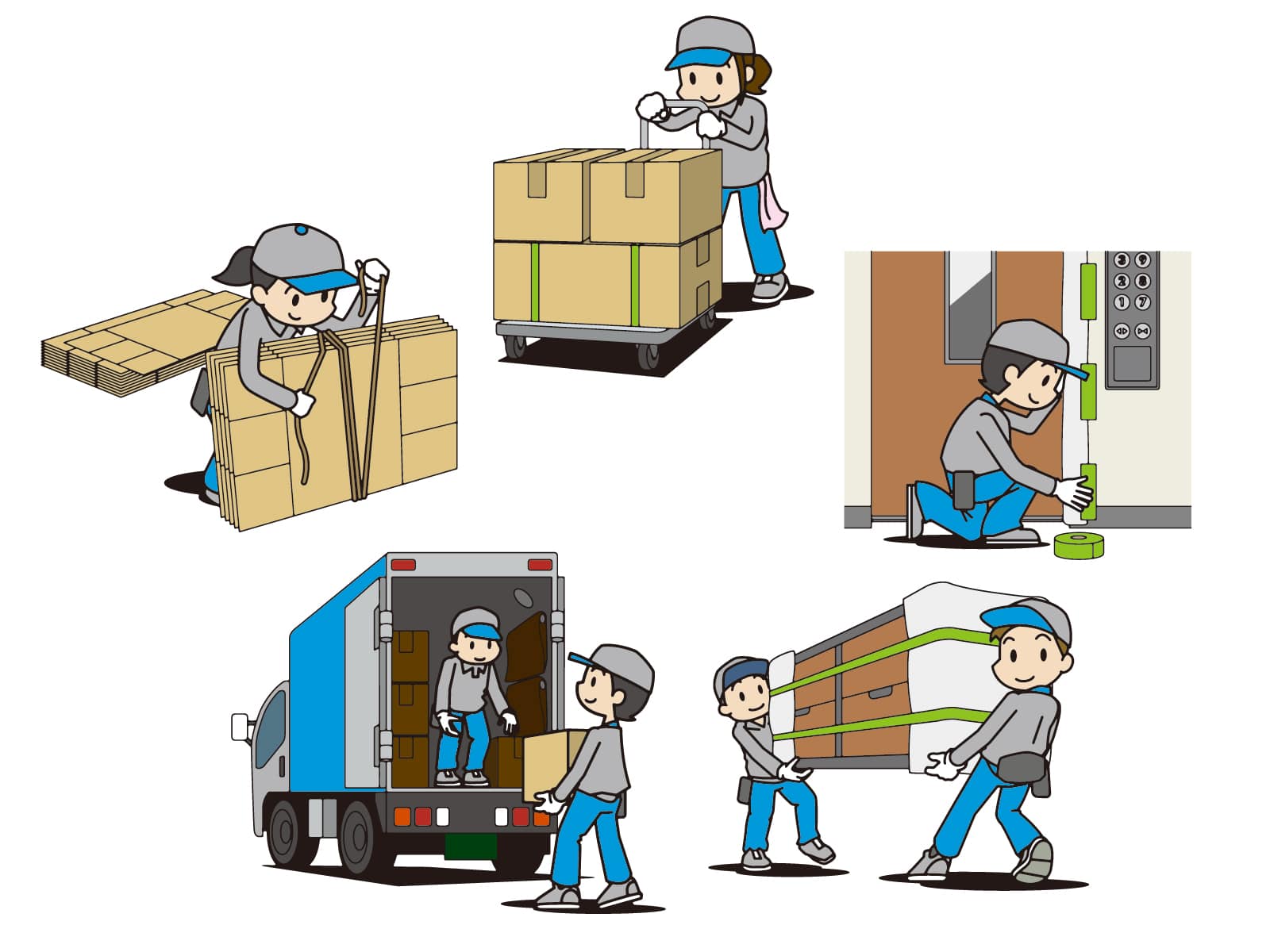Logistics Solutions

We use our experience and know-how accumulated over many years as a comprehensive logistics company to propose logistics systems that meet the needs of our customers. We are also actively promoting business activities aimed at environmental conservation and the realization of a recycling-oriented society in order to pass on a rich environment to the next generation.
Hazardous goods solutions
Solution 1. Provision of chemical distribution services in line with customer needs
In addition to the indoor storage facilities for hazardous materials that we have been operating for a long time, we opened a multi-workstation for hazardous goods in 2019, the first complex of this type of facility in Kyushu.
Various functions (indoor storage, tank container storage, warming, change of packing style, and weighing) have been combined to meet diversified customer needs.
Advantages of Hazardous goods
- The facility allows storage of hazardous material tank containers. Store in the tank container safely until the delivery of the shipper's request date and time.
- We are also able to change the packing style from tanker containers loaded with hazardous materials to tanker trucks and drums. Responding to various requests in the Kyushu area, we will shorten transportation time, reduce transportation risks, and solve the problem of lack of drivers.
- Measures to prevent deterioration due to temperature changes caused by heating (steam/hot water) equipment are also thorough. Warming prior to delivery makes delivery possible while preventing viscosity increase and solidification.
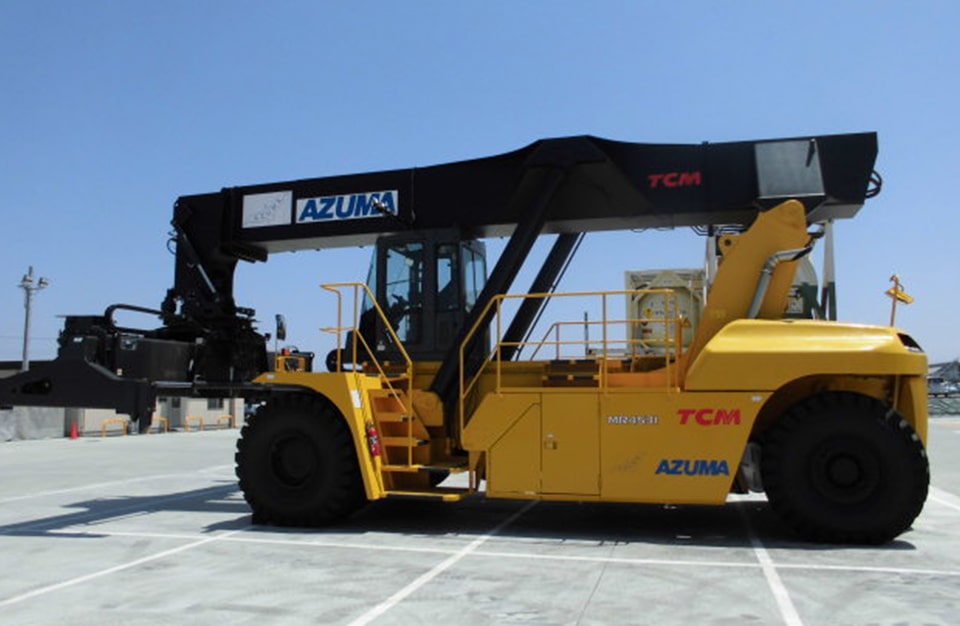
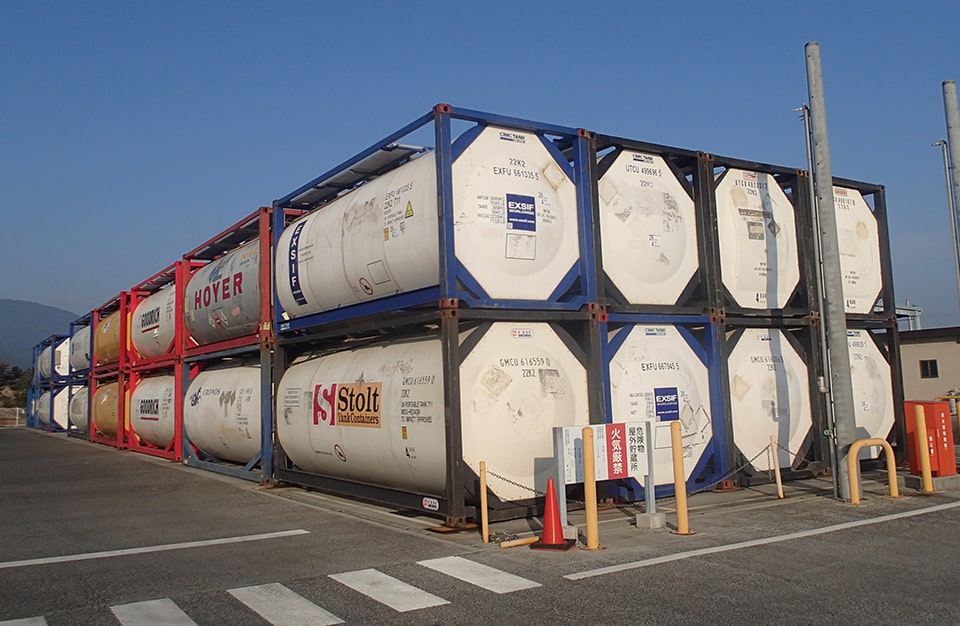

Liquid transportation
Solution 2. Flexible Tank and ISO Tank Container
We are a company that can handle both transportation of flexible tanks (hereinafter referred to as flexible tanks) and ISO tank containers, which are rare even in Japan.
Our strengths include the ability to propose optimal solutions using flexible tank and ISO tank containers to suit the nature of freight and customer needs. We also use functions such as customs clearance, marine container land transportation, and warehousing, as well as domestic and overseas networking to position fluid transportation as a priority area in our international transportation business.
Advantages of using flexible tank and ISO tank containers
-
Improvement of transport efficiency
The transportable quantity per transportation (20-feet container size) is large, and transportation efficiency is improved. Drum: Cargo with specific gravity of 1 → 16,000 liter = 16.0 kiloliters Flexible tank: Cargo with specific gravity of 1 → 21.8 kiloliters (improvement in transportation efficiency of +5.8 kiloliters compared to drum cans) ISO tank container: Cargo with specific gravity of 1 → 20.0 kiloliters (improvement in transportation efficiency of +4.0 kiloliters compared to drum cans) -
Shortening work time and reducing costs
Flexible tanks and ISO tank containers are transportation containers themselves. When transporting the same quantity of liquid cargo, product-filling and unloading are more efficient than ordinary containers (drum/IBC), and labor hours and costs are greatly reduced. -
Available as temporary storage facility
ISO tanks can be easily diverted to temporary storage facilities even during transportation. ISO tanks are said to have a lower environmental impact because they do not require the disposal of drums and other packaging materials.
Flexible tank outline
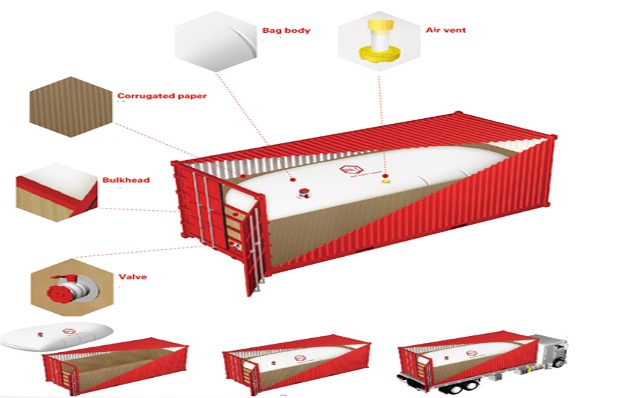
Flexible tanks are containers for transporting non-hazardous liquids, such as food beverages, base oils, and chemicals, in special bags. They are placed in 20-feet marine dry containers, filled with liquids, and transported to the site.
Because it is easy to fill and discharge and does not require frame assembly or forklift, transportation at low cost is possible.
In addition, since the bag is a disposable type that is disposed of at the destination, it can be used safely in terms of sanitation.
The flexible tank itself is a transportation container, and when transporting the same quantity of liquid cargo, product-filling and unloading are more efficient than ordinary containers (drum/IBC), and labor hours and costs related to the operation are reduced.
Items that can be transported in flexible tanks
-
Food products
Wine, shochu, plum sake, liquid seasoning, edible oil, water, other drinks, seasonings, etc. -
Other than food products
Base oil, animal oil (lard, fish oil), vegetable oil (palm oil, castor oil, rice oil etc), lubricating oil, surfactant, latex, etc
Items that are "impossible" to transport with a flexible tank
- Hazardous goods (Hazardous goods at sea and Class 4 3 of the Fire Defense Law with a flash point of 130°C or less)
- Filling temperature above 70°C /-20°C
- Liquid with high viscosity
Examples of the use of flexible tank.
The main body of the flexible tank has a multilayer structure made of polyethylene film, and a woven fabric made of polypropylene is used as a reinforcing material. The fill/draw port is a food-compatible 3" polypropylene male camlock valve, usually a lower fill/draw type with a valve on the bottom of the tank. The valve is connected to a hose with a factory-side female camlock for filling and sampling.
[Specifications]
Tank size:
min. 16.0kℓ to max. 24.0kℓ
Film body:
Polyethylene
Outer cover: polypropylene
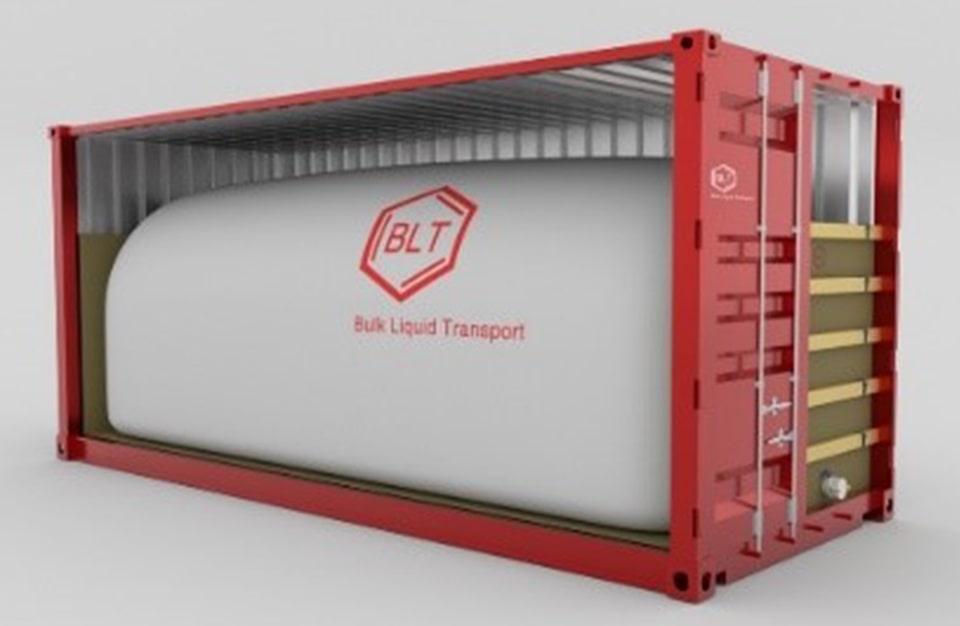
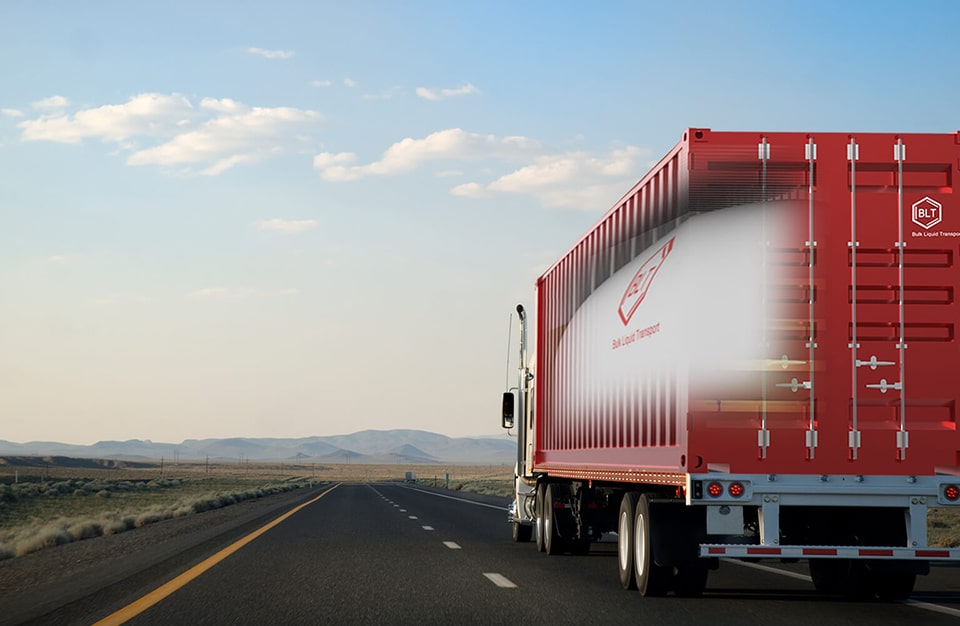
Providing high-quality flexible tanks
The flexible tanks we handle are manufactured by QINGDAO BLT FLEXITANK SOLUTION CO., LTD.(BLT and comply with HALAL,KOSHER,FDA and other standards for food containers in Japan/Europe and other major countries.
It is a high-quality flexible tank manufacturer, and boasts a global No.1 of market shares within the industry.
Outline of ISO tank containers
ISO tank containers are standardized tank containers for use in international freight transportation and storage. The external dimensions are the same as those of a general 20-feet container, which is mainly used for transporting and storing liquids. It is used as a container for the safe and efficient transportation of various liquids, including petroleum products, chemicals, food, wine, and fruit juices. The tank container design also provides adequate sealing and durability to minimize leaks and breaks during transport.
Compared to transportation in drums and other containers, ISO tank containers do not require packing materials and can be cleaned and used repeatedly, which means that they have a lower environmental impact.
In January 2023, we signed a contract with ISO TANK MANAGEMENT PTE. LTD. ITM Corporation for a Japanese agency, and have made a full-scale entry into the field of international marine transportation using tank containers.
[Specifications]
Tank capacity:
24.0/25.0/26.0 kl (product filling rate is 80% to 95% according to the international rules.)
Own weight:
Approx. 4MT tank interior
Material:
Stainless steel (SUS316L)
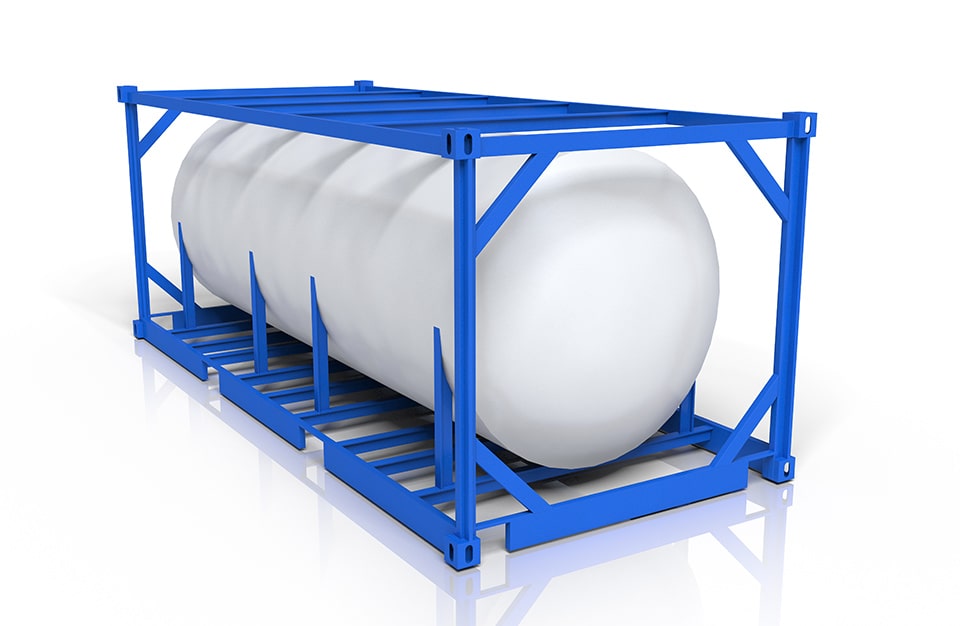
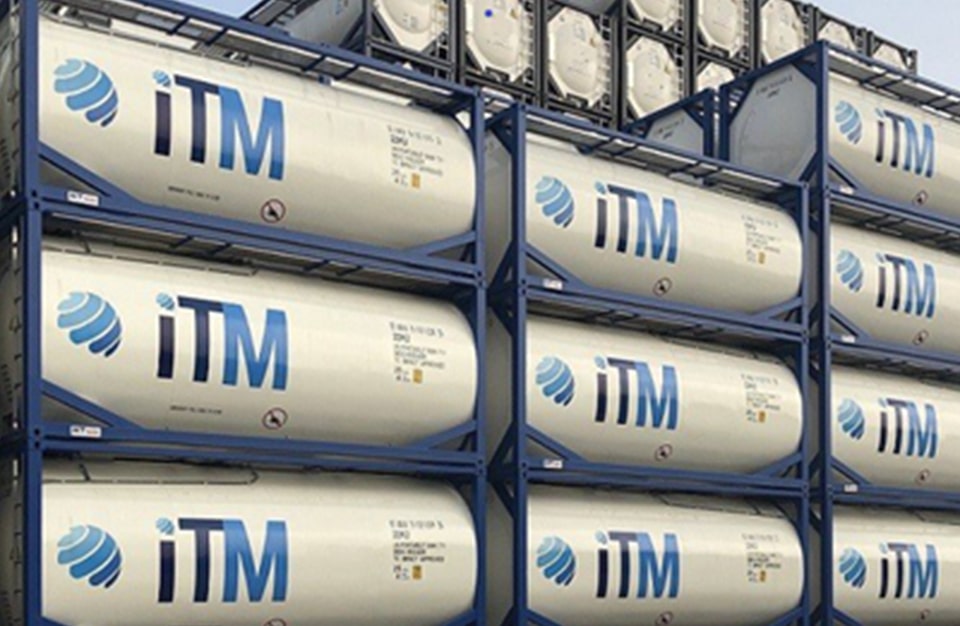
Environmental solutions
Solution 3. Offering a Carbon-free Society and Venous Logistics Services that Contribute to the Realization of Circular Economy
We provide a vein distribution (industrial waste transportation) service as an environmental solution.
These include sea and land transportation of coal ash (cinders, soot and dust), integrated sea and land transportation by modal shift using ferries, wide-area transportation of municipal waste incineration ash (municipal waste), integrated sea and land transportation of soil generated by construction and contaminated soil, and land transportation of sewage sludge carbide and fluidized treated soil, which play an important role in a recycling-oriented society.
Industrial waste transportation services
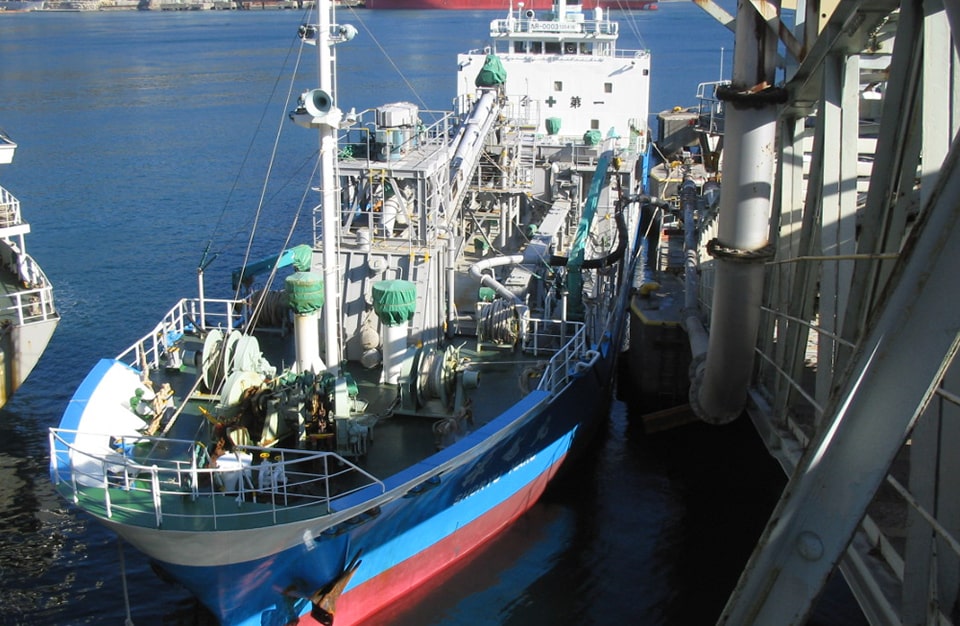
Transport by coastal powder vessels
In order to recycle coal ash (fly ash) generated from coal-fired thermal power plants, we are carrying out a wide range of transportation, including marine transportation to coastal cement plants and land transportation to inland cement plants.
Related link
Obtaining a license for industrial waste collection and transport business
(Compliance)
Combined ocean and land transport of waste through modal shift
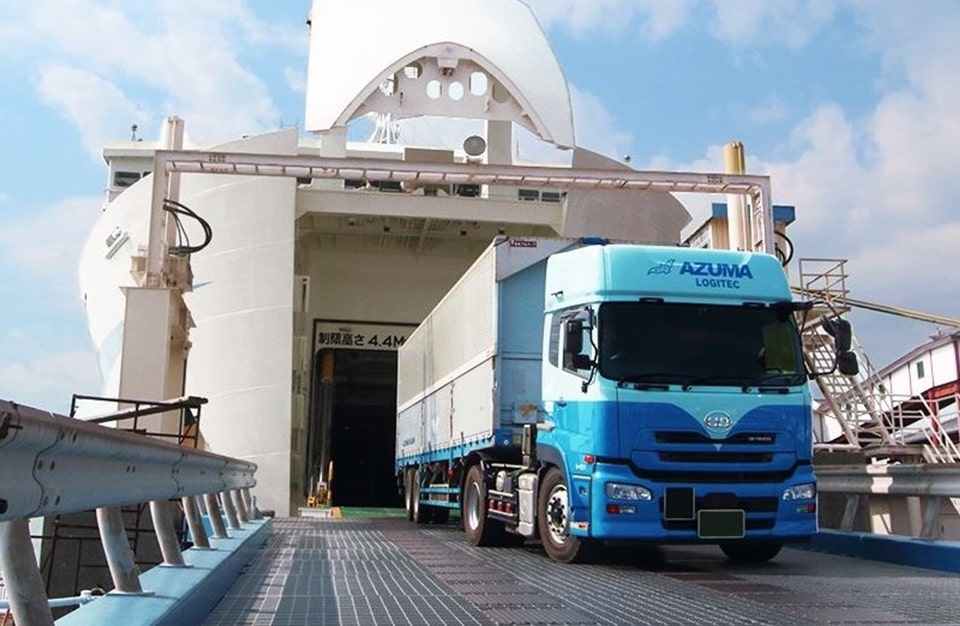
Generally speaking, transportation by ship emits less CO2 than air or land transportation and has a smaller environmental impact. By offering integrated marine and land transport for ferry transport, we are able to achieve earth-friendly transport at low cost through a modal shift.
General waste transport services
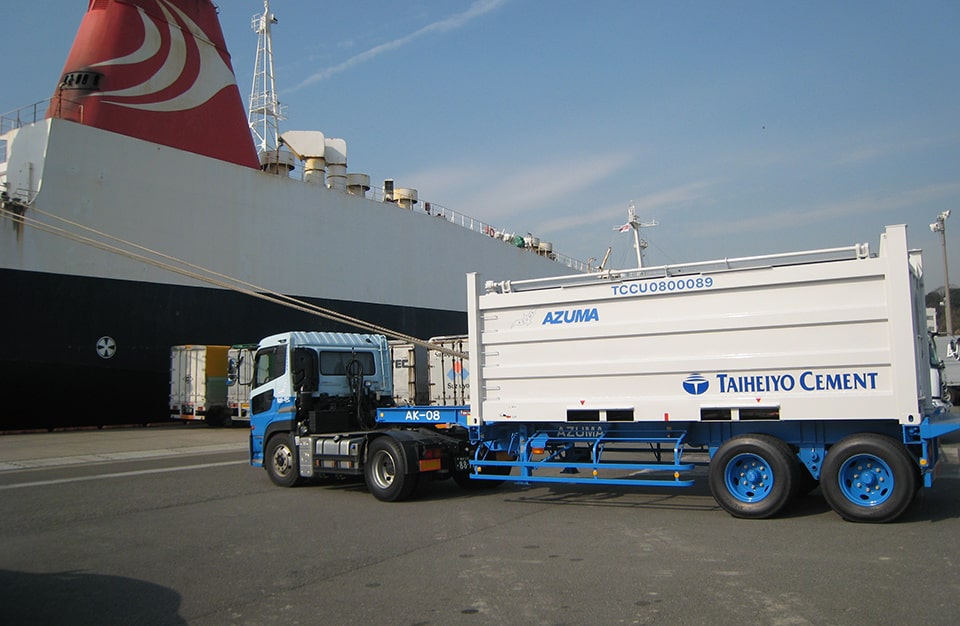
Cement companies accept ash from household garbage as raw material and recycle it to extend the life of landfill sites.
We have developed exclusive vehicles that are completely sealed to prevent the outflow and dispersal of waste, and are deploying land-based transportation in the Kanto region and wide-area transportation using car ferries.
Integrated sea and land transport of soil generated by construction and contaminated soil
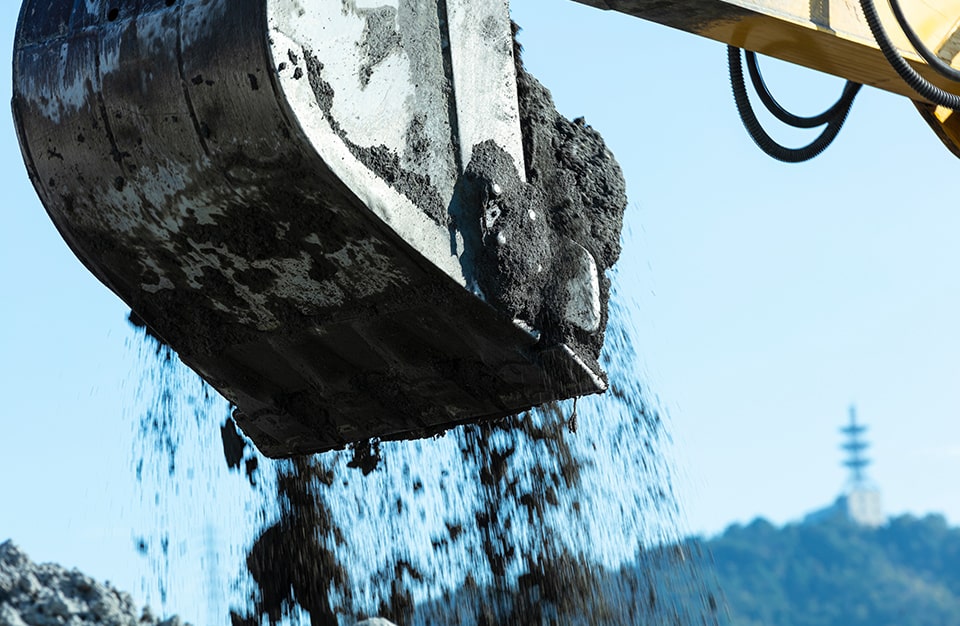
Construction soil and polluted soil generated from construction sites nationwide must be properly disposed of through cleaning, cement recycling, etc.
We consistently carry out land transportation from the place of occurrence to the port, storage at the port and transfer to the ship, and marine transportation by ship.
Moving services
Solution 4. We provide services from the customer's point of view, and ensure safe, reliable, and speedy transportation.
We accept moving by not only corporations but also individual customers.
If you have decided to move, please feel free to contact us first.
* We may not be able to provide services to customers who live overseas or who have difficulty speaking Japanese.
